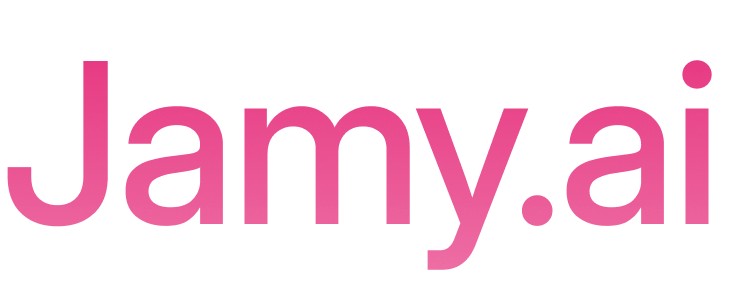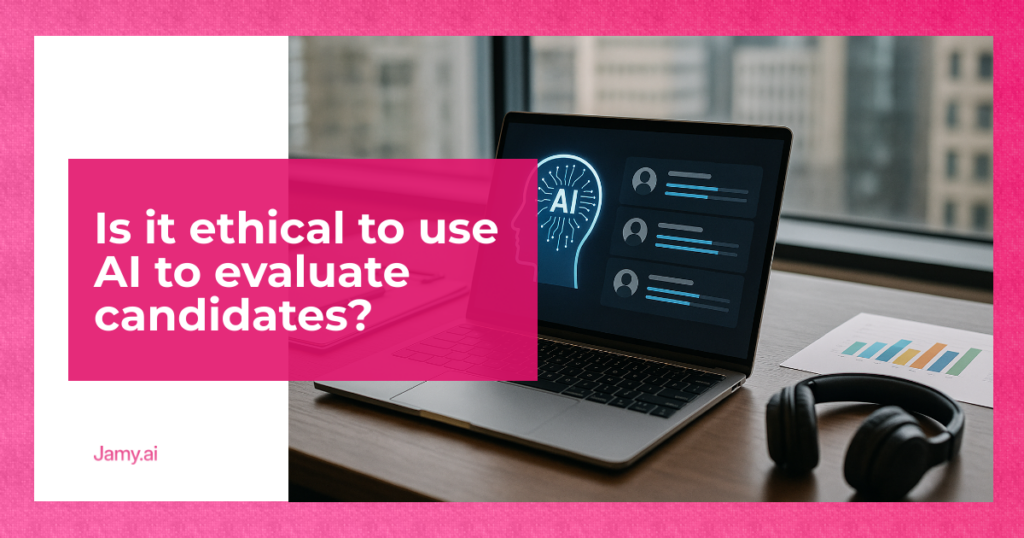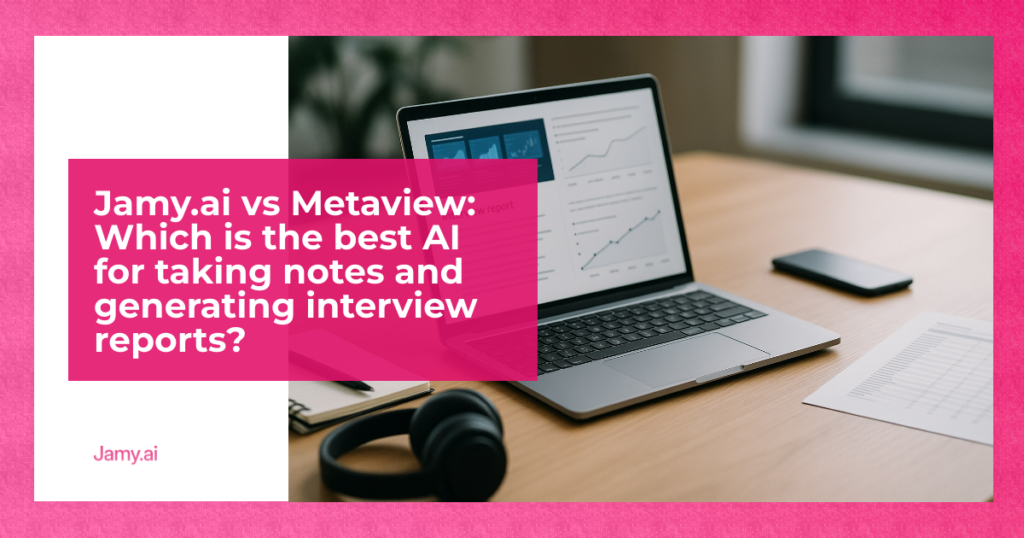Did you know that accurately documenting interviews can reduce errors by 90% and save up to 75% of time? Today, artificial intelligence tools like Jamy.ai and HireVue are transforming this process, making it faster and more effective.
Quick Summary:
-
Common Problems: Manual errors, lack of standard formats, time consumption.
-
AI Solutions:
-
Organized summaries.
-
Objective assessments based on data.
-
Integration with Applicant Tracking Systems (ATS).
-
Benefits: More objective decisions, faster processes, and better team collaboration.
How to Get Started? Use structured templates, set up AI tools, and ensure they integrate with HR systems. This not only improves documentation but also optimizes the entire selection process.
Free Interview Transcription with Artificial Intelligence

Documentation System Setup
To achieve effective documentation in interviews, it’s key to establish well-organized systems from the outset. This ensures a more agile and precise process, helping to make clearer and more informed decisions. Nowadays, AI tools have transformed this field, making documentation simpler and more accurate.
Creation of Interview Templates
Structured templates are the foundation for maintaining consistency in documentation. Here’s a breakdown of the key elements and their function:
|
Component |
Purpose |
Example of Content |
|---|---|---|
|
Basic Data |
Initial information |
Candidate and position data |
|
Standard Questions |
Uniform evaluation |
Technical and behavioral competencies |
|
Space for Notes |
Detailed observations |
Key responses and behaviors |
|
Evaluation Criteria |
Objective scoring |
Competency rating scale |
Installation of AI Tools for Documentation
Tools like ZEKO Interview simplify the process by automating transcriptions, customizing templates, integrating with HR systems, and evaluating candidates. This can reduce documentation time by up to 90%. However, to take full advantage of these features, it is important to configure the tool appropriately.
Pre-Interview Preparation
Before the interview, upload the candidate’s resume and the job description to platforms like Jamy.ai. This will allow you to receive tailored suggestions. Additionally, check the technical connection and adjust specific settings, such as technical terms, evaluation criteria, and report formats. Proper preparation ensures the tools work efficiently during the interview.
Setting these systems up correctly not only improves the accuracy of documentation but also reduces the time spent on administrative tasks. This allows interviewers to focus on what is most important: effectively evaluating candidates. With this solid foundation, the next step is to use AI during the interview to achieve better results.
Using AI During Interviews
Artificial intelligence tools are changing how interviews are documented. It is now possible to process information in real time, allowing interviewers to focus more on the conversation and less on taking notes.
Real-Time Documentation
Platforms like Jamy.ai offer solutions that automate note-taking, eliminating the need to do it manually. These tools are compatible with multiple languages and easily integrate with applications like Google Meet, Zoom, and Microsoft Teams.
|
Function |
Advantage |
|---|---|
|
Automatic transcription |
Accurate record and keyword detection |
|
Synchronized recording |
Audiovisual documentation with time stamps |
AI-Generated Summaries
Artificial intelligence not only documents but also organizes and analyzes the information obtained during interviews. This includes:
-
Evaluating technical and behavioral competencies in a structured manner.
-
Identifying key responses according to specific categories.
-
Providing objective assessments based on established criteria.
-
Creating clear summaries with the most important points.
These tools are affordable even for small teams and offer great value. To use them efficiently, it is essential to:
-
Have a stable internet connection.
-
Inform the candidate from the beginning about the use of these technologies to ensure transparency.
With complete and organized records, subsequent analysis becomes easier, speeding up the decision-making process.
Post-Interview Documentation
After the interview, it is crucial to maintain clear and organized records to make informed decisions. This process not only organizes the collected information but also prepares it for integration with broader management systems. Nowadays, AI-based tools make this task simpler and more accurate.
Scoring Candidates with AI
Platforms like Harver and Vervoe transform notes and transcriptions into automatic evaluations. They analyze key aspects such as team fit and technical skills, ensuring a uniform evaluation for each candidate.
|
Aspect |
Evaluation Method |
|---|---|
|
Team Fit |
Behavioral response analysis |
|
Technical Skills |
Specific tests for the position |
|
Soft Skills |
Evaluation of communication and attitude |
|
Success Potential |
Predictions based on previous data |
Creating Reports for the Team
With tools like Jamy.ai, it is possible to generate clear summaries that highlight strengths, areas for improvement, and comparisons between candidates. This helps the hiring team to quickly access relevant information and make data-driven decisions.
Identifying Key Points
AI also allows for the analysis of patterns, keywords, and coherence in candidates’ responses. This type of advanced analysis provides a more detailed view of each individual’s competencies and performance.
Additionally, integration with systems like Workday and BambooHR simplifies the tracking of important metrics and provides a clearer view of the selection process. Once this documentation is completed, the next step is to connect it with other tools to maximize its utility.
Connecting with Other HR Tools
Integrating documentation with HR systems improves hiring processes by making them smoother and more efficient. These connections complement the previously mentioned artificial intelligence tools, creating a more integrated workflow.
Integration with ATS
Applicant Tracking Systems (ATS) are essential in managing hiring. Jamy.ai connects directly with leading ATS in the market, offering clear benefits:
|
Functionality |
Advantage |
|---|---|
|
Synchronization and centralized storage |
Organization and automatic updates of documents |
|
Real-time notifications |
Immediate alerts about changes in candidate status |
|
Unified tracking |
Complete and consolidated view of each candidate’s progress |
Document Storage and Access
For effective management, it is crucial to have tools that offer data encryption, standard organization, clear access controls, and automatic backups. These features protect the information and structure it efficiently.
Sharing Notes in Teams
Collaboration among team members is essential for making informed decisions. Current tools allow for more agile teamwork, with features like real-time comments, shared templates, and group analysis. They also integrate with platforms like Slack, which can reduce hiring times by up to 40%.
|
Feature |
Use |
|---|---|
|
Real-time comments |
Allows immediate discussion of candidates |
|
Shared templates |
Ensures uniform evaluations among interviewers |
|
Collaborative analysis |
Facilitates comparison of team opinions |
|
Improves communication in already familiar tools |
“The integration of documentation with HR systems can significantly speed up the hiring process by reducing manual data entry, improving information accuracy, and boosting collaboration among hiring team members.”
Standardizing documentation and maintaining consistent monitoring of processes are key steps to make the most of these integrations. These tools not only make documentation more efficient but also more accessible for the entire team involved in hiring.
Conclusion
AI tools have completely changed how companies manage documentation in their selection processes, automating repetitive tasks, reducing errors, and optimizing time.
Summary of Key Steps
The integration of AI tools in interviews improves every stage of the process: from preparation, through real-time documentation, to subsequent evaluation. Companies that have adopted these solutions have seen significant improvements in their hiring systems, as shown below:
|
Phase |
Main Benefit |
Impact |
|---|---|---|
|
Preparation |
Use of automated templates |
40% reduction in initial time |
|
Live Documentation |
Automatic transcription |
90% accuracy in captured information |
|
Post-Interview |
AI-assisted evaluation |
75% less time on analysis |
Impact of AI Documentation
Platforms like Jamy.ai have managed to reduce the time spent on documentation by 75%, decrease errors by 90%, and facilitate collaboration thanks to integrations with existing tools. These results emphasize how the strategic implementation of AI can transform hiring processes.
How to Get Started with AI Tools
If you are considering optimizing the documentation of interviews, here are some initial steps:
1. Identify Needs
It is important to analyze the main challenges in current documentation and choose tools like Supernormal or Quil that fit those requirements.
2. Phased Implementation
Starting with a basic plan helps measure results before expanding the use of these solutions.
3. Team Training
Ensuring the team is trained guarantees they can make the most of the functionalities of the tools.
Adopting AI tools for documentation not only streamlines processes but also frees up time for HR teams to focus on more strategic tasks within the selection process.
FAQs
Can AI summarize an interview?
Yes, tools like Metaview use natural language processing (NLP) to create automatic summaries. These tools highlight key points and specific skills, allowing interviewers to focus on the conversation instead of taking notes. Additionally, they complement functions like real-time transcriptions.
|
Function |
Benefit |
Recommended Tool |
|---|---|---|
|
Automatic Transcription |
Real-time accuracy |
|
|
Structured Summary |
Organization by skills |
Metaview |
|
Candidate Evaluation |
Objective analysis |
HireVue |
What advantages does AI documentation have?
AI-assisted documentation allows saving time, reducing errors, and structuring information efficiently. It also ensures more objective evaluations by automating repetitive tasks.
How does it integrate with other HR systems?
Tools like Pandapé can synchronize with Applicant Tracking Systems (ATS). This facilitates the generation of custom reports, automatic data updates, and real-time monitoring of selection processes.
“The setup of custom reports and real-time data measurement significantly improves the efficiency of the recruitment process.”
What are the best implementation practices?
To successfully implement these tools, it is important to:
-
Define clear objectives.
-
Train the team on using the tools.
-
Adjust the process based on initial results obtained.
A well-planned adoption can transform the hiring process. For instance, 92% of candidates share their interview experiences with others, highlighting the importance of an effective process.
With these strategies, companies can begin to leverage AI tools to optimize every stage of recruitment.


